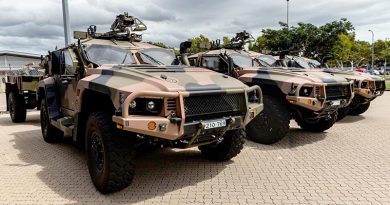Navy looks to the skies

Communications, remote sensing and precision navigation and timing for warships and submarines is becoming more and more important – and satellite technology is making the process that much easier.
CAPTION: Lieutenant Commander Benjamin Piggott is the Navy Information Warfare Branch’s Deputy Director- Space based in Canberra. Story by Acting Sub Lieutenant Jack Meadows. Photo by Petty Officer Bradley Darvill.
The ADF is increasingly investing in satellite capabilities in space to allow Navy surface and sub-surface vessels to better assess the maritime environment and respond to potential threats over the horizon.
Navy Information Warfare’s Deputy Director Space Lieutenant Commander Ben Piggott said such capabilities and platforms provided Navy with a strategic advantage.
“Satellite communications is the only way to move a lot of information to and from ships and submarines quickly,” Lieutenant Commander Piggott said.
“Remote-sensing satellites are important so that we can understand the environment beyond the range of our on-board sensors, and GPS is essential so that we can know where we are, target weapons accurately, and synchronise our communications.
“Defence is also exploring options for space electronic warfare to deter interference with our space systems.”
Lieutenant Commander Piggott’s comments come as Defence highlights its long-standing and diverse science-based capabilities as part of National Science Week, Australia’s annual celebration of all things relating to science and technology held each year in August.
For Navy, it is an opportunity to highlight the ground-breaking work of its Information Warfare Space specialists – a relatively new qualification.
.
.

.
.





